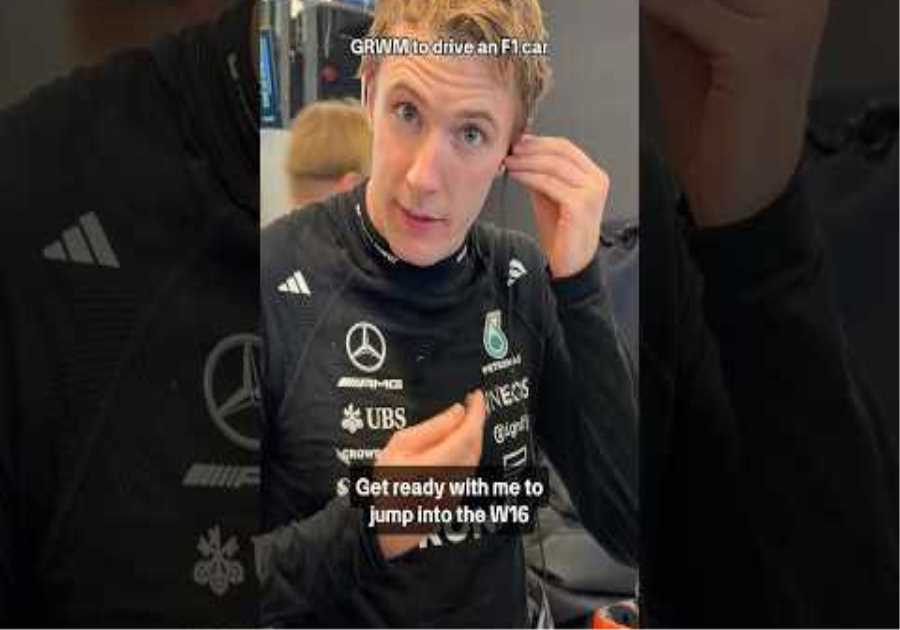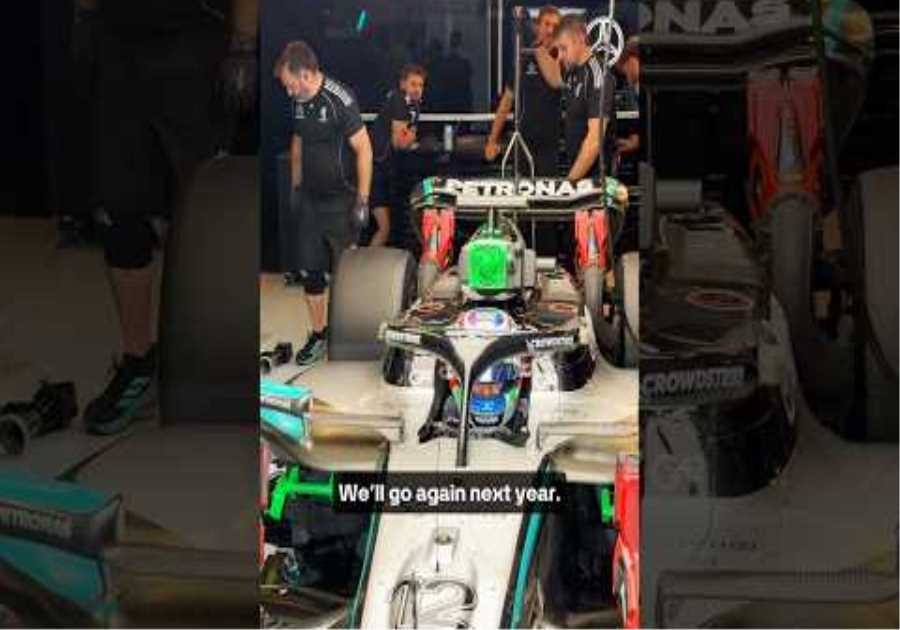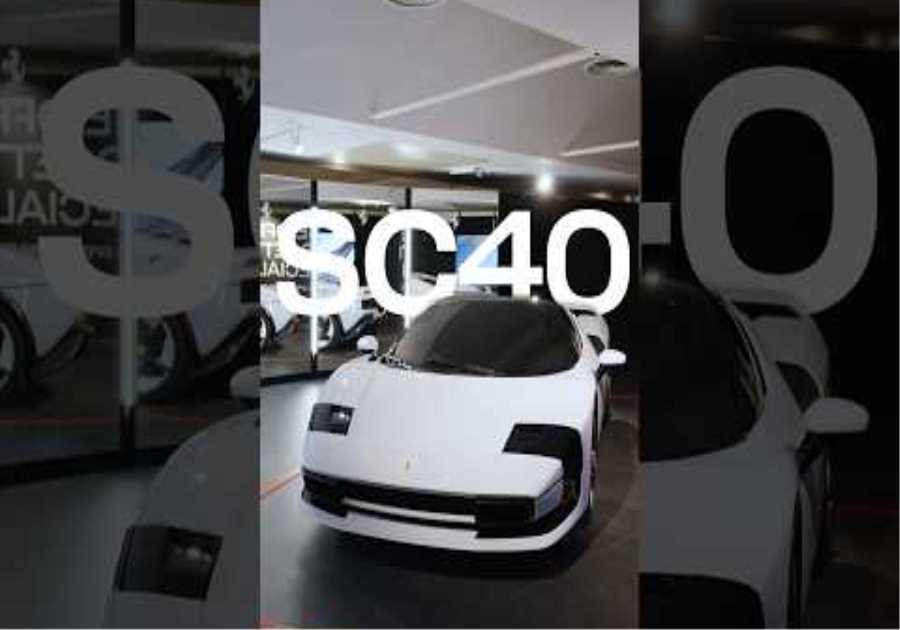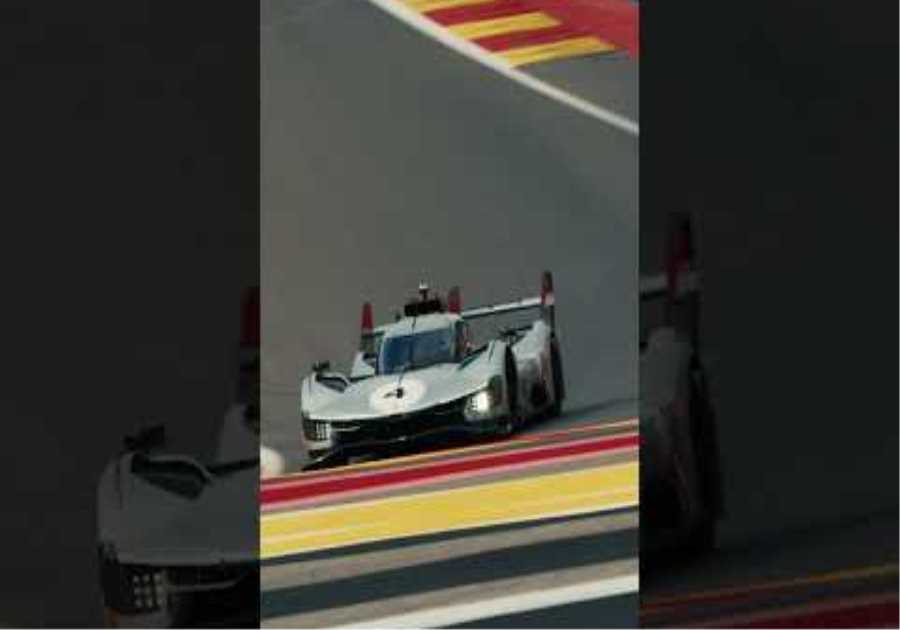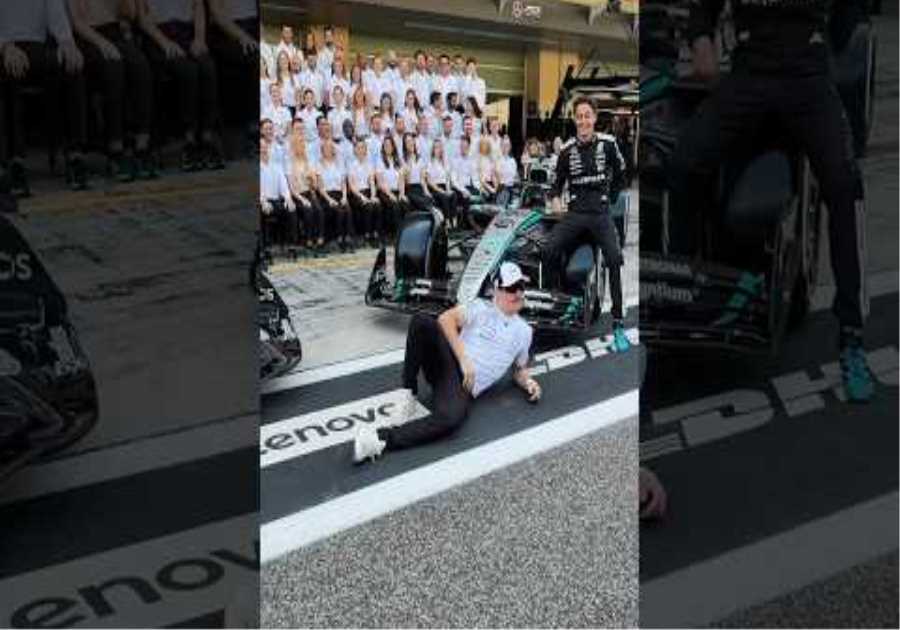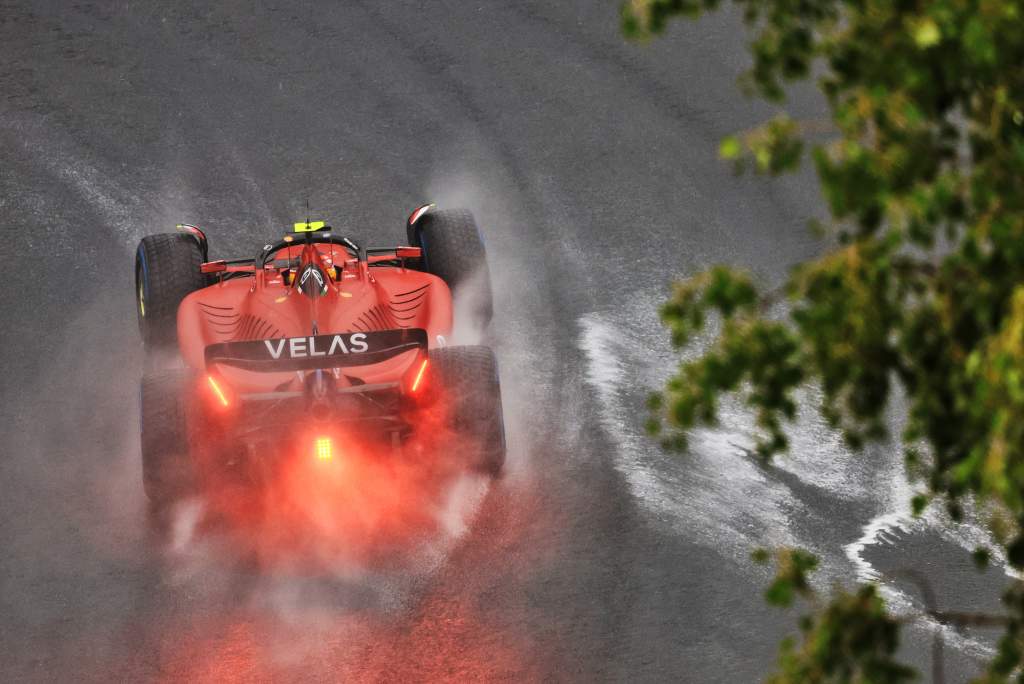
After throwing away a second Formula 1 pole position in qualifying for the Hungarian Grand Prix, Carlos Sainz was disappointed.
But despite his frustration that only his rear-end snap at Turn 5 had let George Russell top qualifying, the Ferrari driver could see the bigger picture given how his 2022 season started.
Sainz began the year struggling to get the best out of the Ferrari F1-75, falling into a number two role while Charles Leclerc led the way.
He turned that around later in the first half of the season, stringing together a stronger run of form in the run up to the summer break.
“We have to keep in mind where we’re coming from,” Sainz said shortly after Hungary qualifying.
“I’ve come from a tough first half of the season and now it looks like I’m finding my groove around this car and starting to be very quick, which is good news.”
Sainz was very frank about his struggles early in the year. On paper, his season-opening Bahrain Grand Prix weekend wasn’t too bad: third in qualifying, 0.129s off Leclerc and a genuine pole threat then second place in the race, albeit after Max Verstappen’s retirement.
But Sainz accepted he had “homework” to do and recognized that he was in a very different situation to the one he faced during his strong first year with Ferrari.
“In FP1, FP2 and FP3 I was very far behind, the most far that I’ve ever been in Ferrari and that’s why even with a 1-2 I’m not entirely happy with the weekend,” said Sainz after the Bahrain GP .
“As a Ferrari driver, it’s been my most difficult weekend and it just shows that I need to put my head down, understand this car, understand where Charles is making the difference with his driving and the way he’s approaching the corners and driving the tyres .”
This wasn’t the work of a moment. In Saudi Arabia, Sainz made “a bit of progress” and again looked at a pole position threat – setting the pace in Q1, Q2 and on the first Q3 runs on scrubbed softs. But he couldn’t improve on fresh softs, falling two tenths of a second behind Leclerc.
He took a solid third in the race having jumped Sergio Perez, who lost out thanks to a badly-timed safety car, but realistically he was the weakest of the Red Bull and Ferrari drivers in Jeddah. As Sainz put it, the weekend allowed him to “understand fully the magnitude” of his struggles with the car.
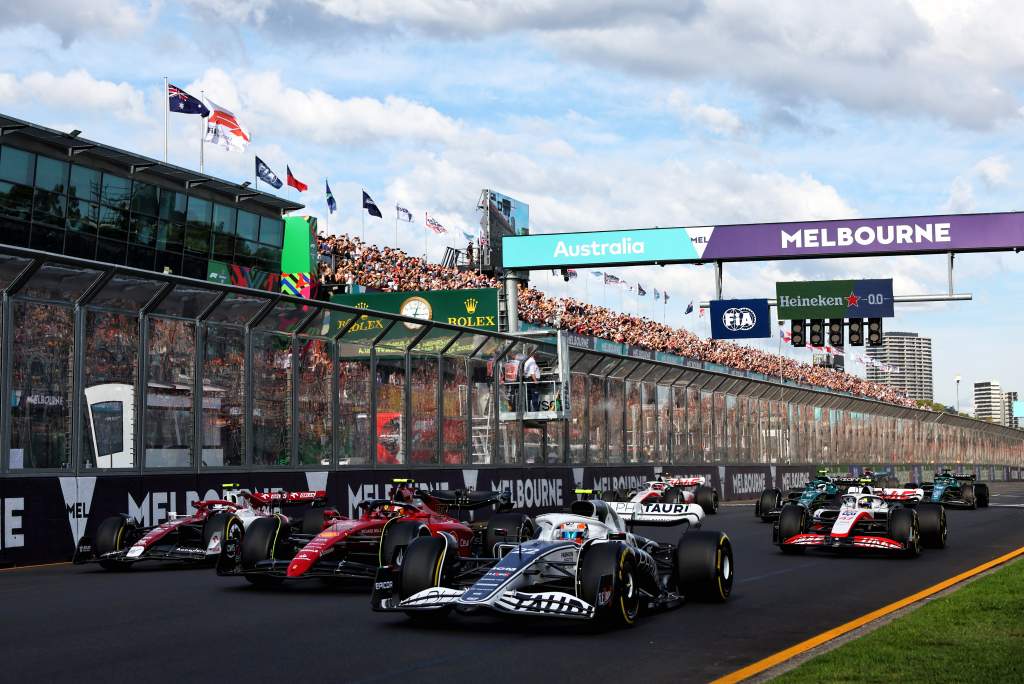
Sainz’s season bottomed out in April. In Australia, he was in the mix for pole position but a red flag deployed seconds before he crossed the line to finish his first flying lap then a problem firing up his car after the stoppage, leaving him with no time for an extra preparation lap, meant he had to complete a lap on “freezing” tires.
That left him ninth on the grid, with a bad launch caused by a late change of steering wheel to one with the wrong settings dropping him to 13th.
He then made a misjudged attempt to pass Yuki Tsunoda on the first lap that relegated him to 14th before understeering off at Turn 9 in Valtteri Bottas’s wake having just passed Mick Schumacher. He spun on the grass and ended up in the gravel at the exit of Turn 10.
That was followed by a crash in Q2 at Imola then an early exit from the grand prix when he was hit by Daniel Ricciardo on the first lap.
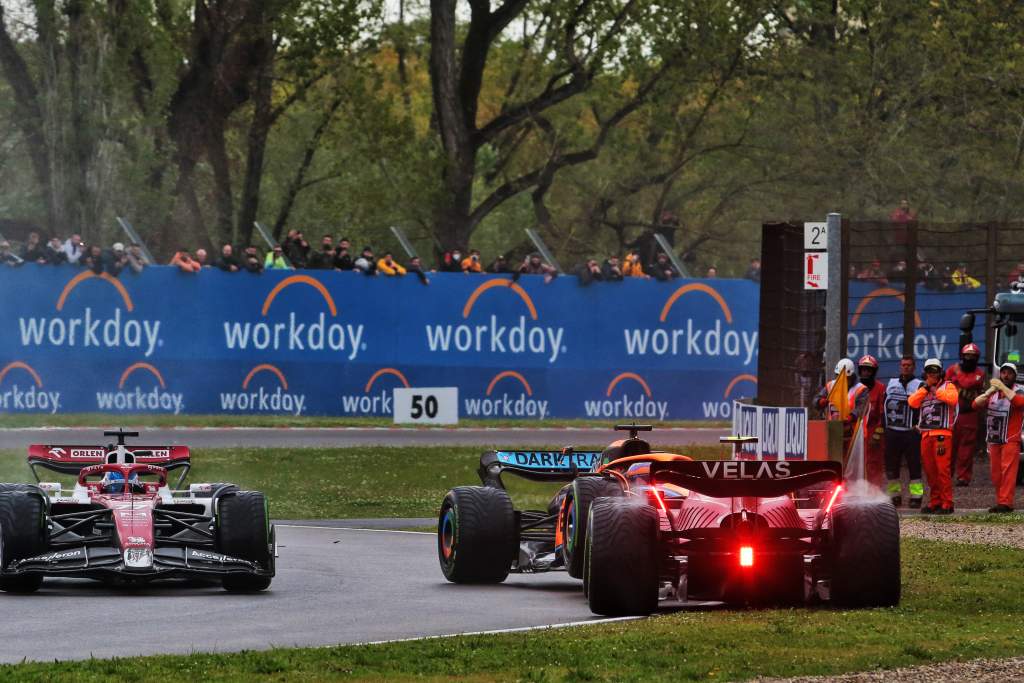
Troubling as the mishaps in Australia and Italy were, they weren’t Sainz’s main difficulty. He still wasn’t in tune with the car and he was well aware that he wasn’t maximizing the opportunity of being in a winning car for the first time in his F1 career. Team principal Mattia Binotto suggested the pressure was getting to him.
“That’s a matter of managing the pressure,” said Binotto. “It is maybe the first time in his career that he’s got a car which is fast enough to compete for the best positions, and he simply needs to get used to that.”
Sainz dismissed that notion, although it was clear that there were moments at Albert Park and Imola where he didn’t respond well to setbacks outside of his control. But the main problem was still the car.
He described his struggles with the F1-75 as “quite a lot” after the Imola race.
“It’s no secret that mistakes like happen for a reason and I’m not 100%, I’m out there fighting the car and trying to figure it out,” Sainz said of his qualifying shunt.
“Obviously, I’m quick, this is no secret, yesterday [in the Imola sprint] I was quick, in Australia I was quick, it’s just the confidence with it, and the predictability that I have from the car. As soon as I get this sorted. I want to be 100%.”
Sainz also reiterated that he felt the new regulations “haven’t suited my driving style”. Leclerc certainly adapted to them more quickly, speaking during testing about putting significant effort into changing the way he approaches the mid and late phases of the braking zones.
The problem Sainz had on turn in was the rear instability – or perhaps more accurate to say the fear of it. Leclerc is a driver capable of living right on the edge and confident in being able to deal with any oversteer that manifests itself in the turn-in phase. Sainz less so, mainly through the unpredictability of the occasional moments when the rear gave up.
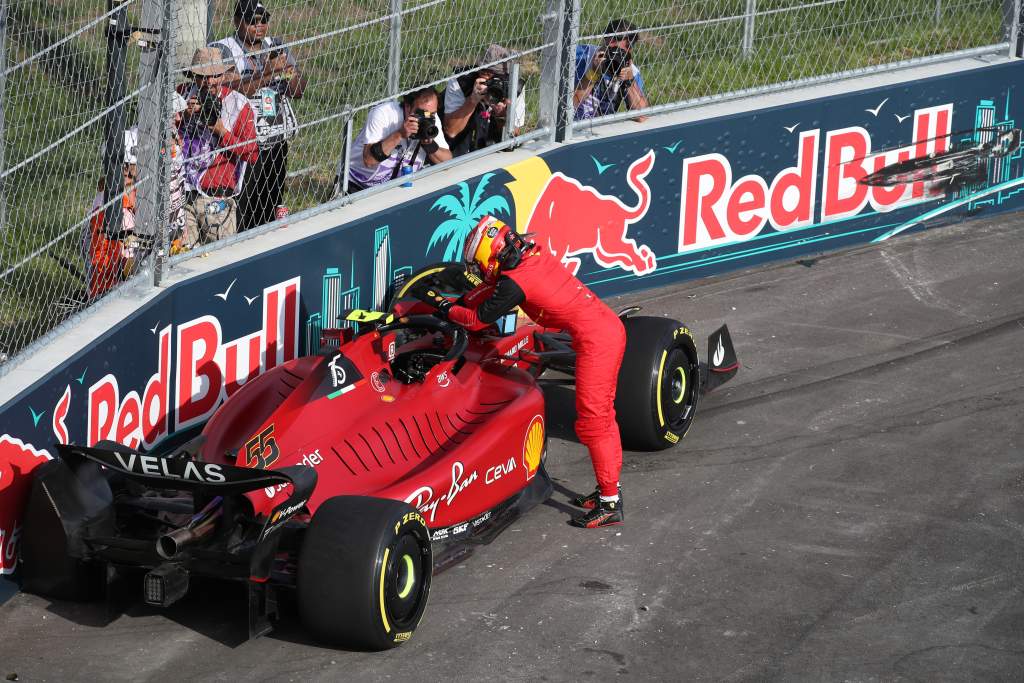
“This car is still surprising me,” Sainz said after his FP1 crash on the opening day of the Miami Grand Prix weekend.
“There are still things that are, let’s say, still a bit out of my control that are surprising me and once I get on top of them and learn them, I think – as you saw today – I can be quick on any given lap .”
Sainz also spoke of adopting a more ‘step-by-step’ approach to building speed at this point, rather than trying to force the issue.
Despite his Miami mistake, he was strong in qualifying with the two-tenths difference between the two Ferraris down to the wheelspin Sainz picked up coming out of the final real corner. That’s one area where he’s likely always to have a disadvantage compared to Leclerc, who has extraordinary aptitude for traction sensing on overheating tires late in a qualifying lap.
Third in Miami ultimately got Sainz’s season back onto an even keel. He then produced a better Spain weekend than the result – 11th – suggested. He suffered diffuser damage in the race after spinning into the gravel at Turn 4. That was blamed on wind at a corner he said he was on a “knife-edge” all weekend with Verstappen having a similar off, while in qualifying he mainly shipped time to Leclerc in the middle sector.
Again, that rear-end instability limited him on corner entries and often left him to lose time mid-corner – notably at Turn 1 and Turn 4 in Barcelona qualifying.
“It’s not been easy,” said Sainz. “As you can probably see from the onboards and you can probably see from the mistakes that I’m struggling quite a bit to drive this car and to understand how to extract the maximum out of it.
“It’s giving me a whole new challenge in my Formula 1 career. And I’m having to think out of the box, drive out of the box and with this comes mistakes. It comes to learning things that I’m having to learn.
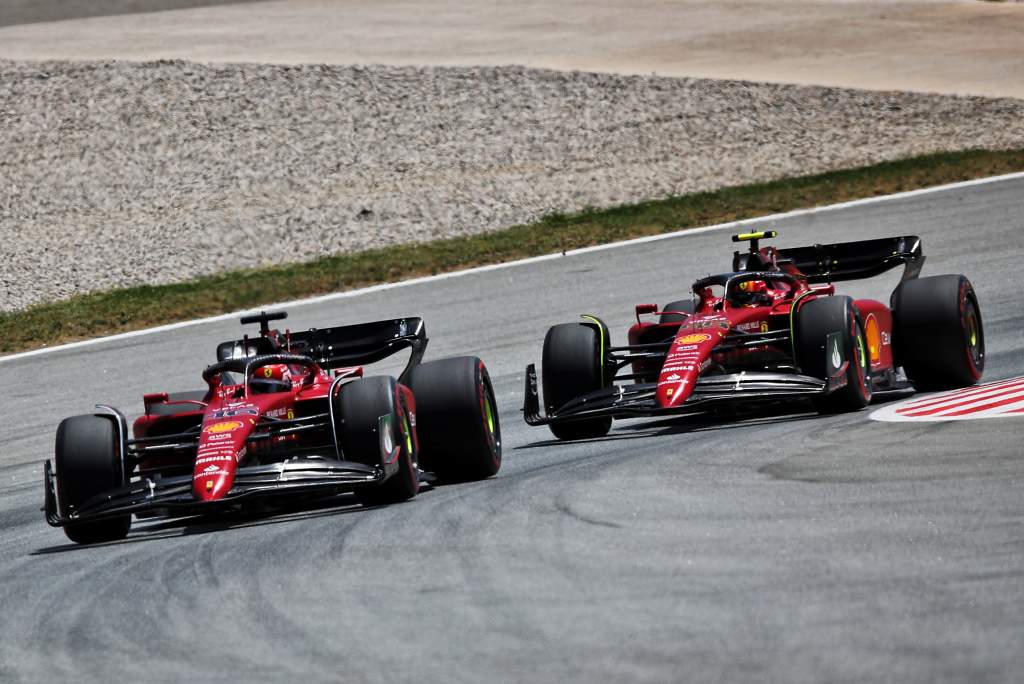
“I’m putting my head down to try and fight this and try to make it turn as soon as possible.
“There’s been a combination of misfortune and mistakes from my side, which also counts. But I think in the future it is going to turn all of a sudden or it’s going to turn little by little. I just need to keep my head down.”
Sainz had another solid weekend in Monaco, where he finished second – two places ahead of Leclerc – in the race. That was thanks to him imposing himself on Ferrari strategically, rejecting a change to intermediates and insisting on going straight to slicks. He was still slower than Leclerc. It was similar in Azerbaijan where he underachieved in qualifying after an untidy lap having decided against seeking a tow, then retired with a hydraulics problem while running fourth.

Then came Canada, which does appear to have been a turning point, even though it was difficult to benchmark Sainz’s performance against Leclerc, who had a back-of-the-grid penalty for power unit component changes and spent much of the race in traffic .
But Sainz did claim he was more comfortable in the car, proved something by his attacking driving as he attempted to get into a position to attack Verstappen for the lead on his way to second place. As he put it: “I was comfortable with the car, I was all over the place, close to the walls with confidence, ragging it”. He was delighted to be “the fastest man on track”, but was uncertain whether it was circuit-dependent.
At Silverstone, Sainz outqualified Leclerc then beat him in the race on his way to a first grand prix win. On paper, that sounds like the completion of a recovery that made him the stronger Ferrari driver, but good as his weekend was Leclerc was still quicker.
In the wet qualifying session, Leclerc was set to outpace Sainz when he spun on his final lap, then in the race was clearly quicker but lost out strategically. Even so, it was a good weekend for Sainz and one that netted a breakthrough first victory.
The next race in Austria played out similarly, but without Leclerc making a qualifying error or any strategic shenanigans. Leclerc was the faster Ferrari driver and won, while Sainz was denied second place given he was about to pass Verstappen when he suffered an engine failure.
France was a good damage limitation exercise from Sainz, who started from the back row. An oddly-timed pitstop, during which he had to serve a five-second penalty for an unsafe release, ensured he finished fifth. It would have been logical to leave him out for a few more laps to ensure it wasn’t possible to build a bit enough advantage over Russell and Perez to finish a place or two higher.
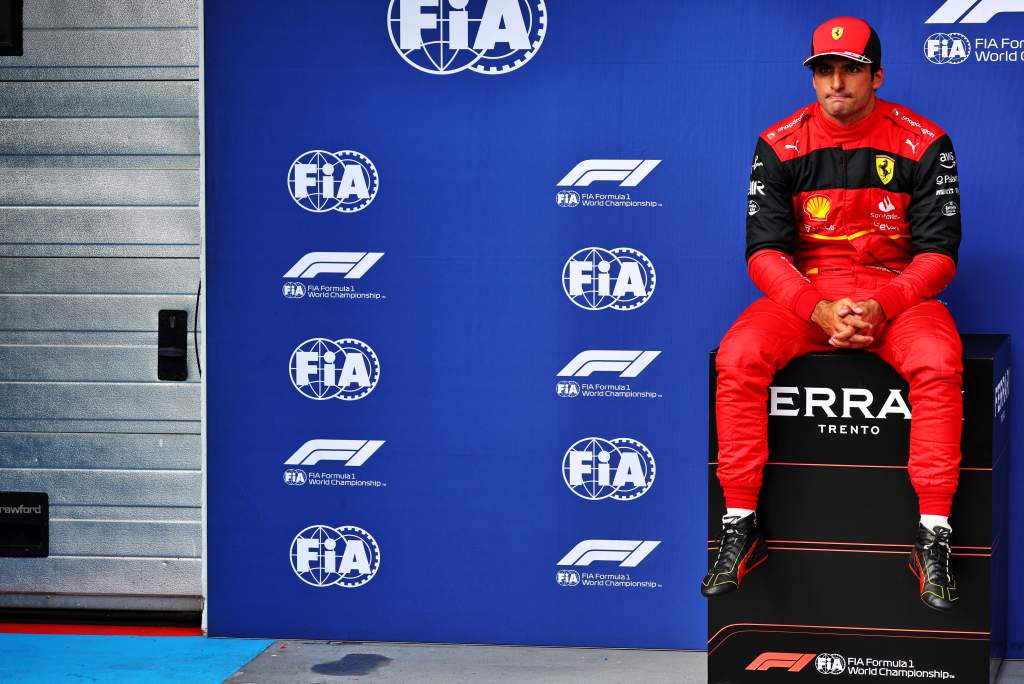
Sainz’s recovery trajectory was completed on a Hungary weekend where he genuinely did appear to be the stronger Ferrari driver over a single lap – hence the frustration at missing out on pole position – before finishing fourth in the race. Initially, Sainz was overcut by Leclerc, but then got back ahead thanks to his team-mate’s hard-tyre misstep.
The season restarts at Spa with Sainz only 22 points behind team-mate Leclerc, albeit with no realistic chance of getting into championship contention given he’s a massive 100 points behind Verstappen. But given his bad start, any hope of the championship was effectively gone after four races.
Sainz is still, on balance, the slightly weaker Ferrari driver. But he has transformed himself from a driver who was quick but a little too close to a mistake into one with confidence and consistency. He really has got into the groove with the car.
No longer is he suffering from confidence-sapping fear that the rear might suddenly snap away from him in a way he can’t get under control, which is perhaps a consequence of the work Ferrari has done to improve the airflow expansion consistency in the diffuser – along with tweaks to his own approach to corner entries.
Considering where he was at the start of the season, Sainz can be very satisfied with the job he’s done across the first 13 races.
That should put him in a much better position to give Leclerc a harder time in the final nine.

